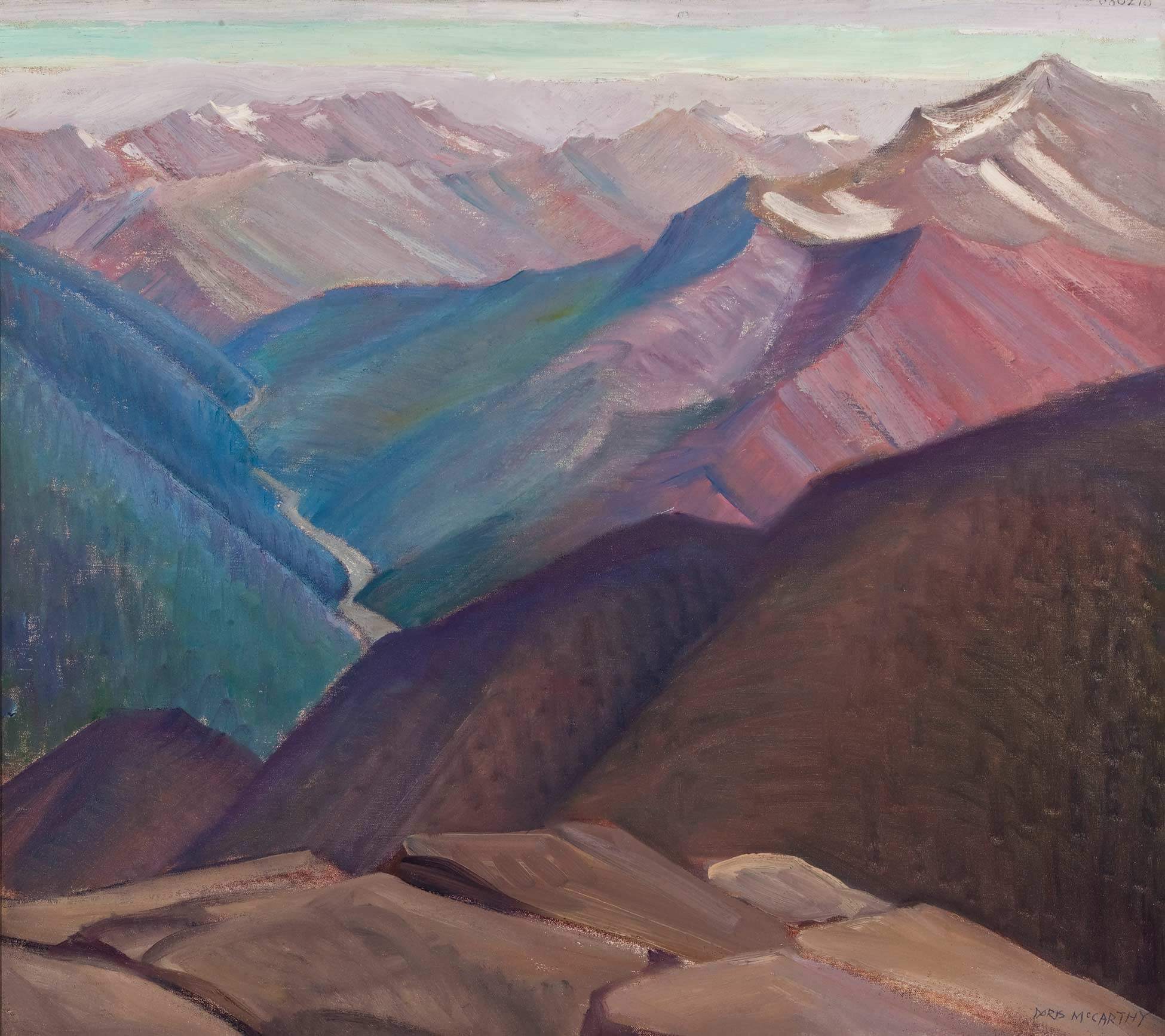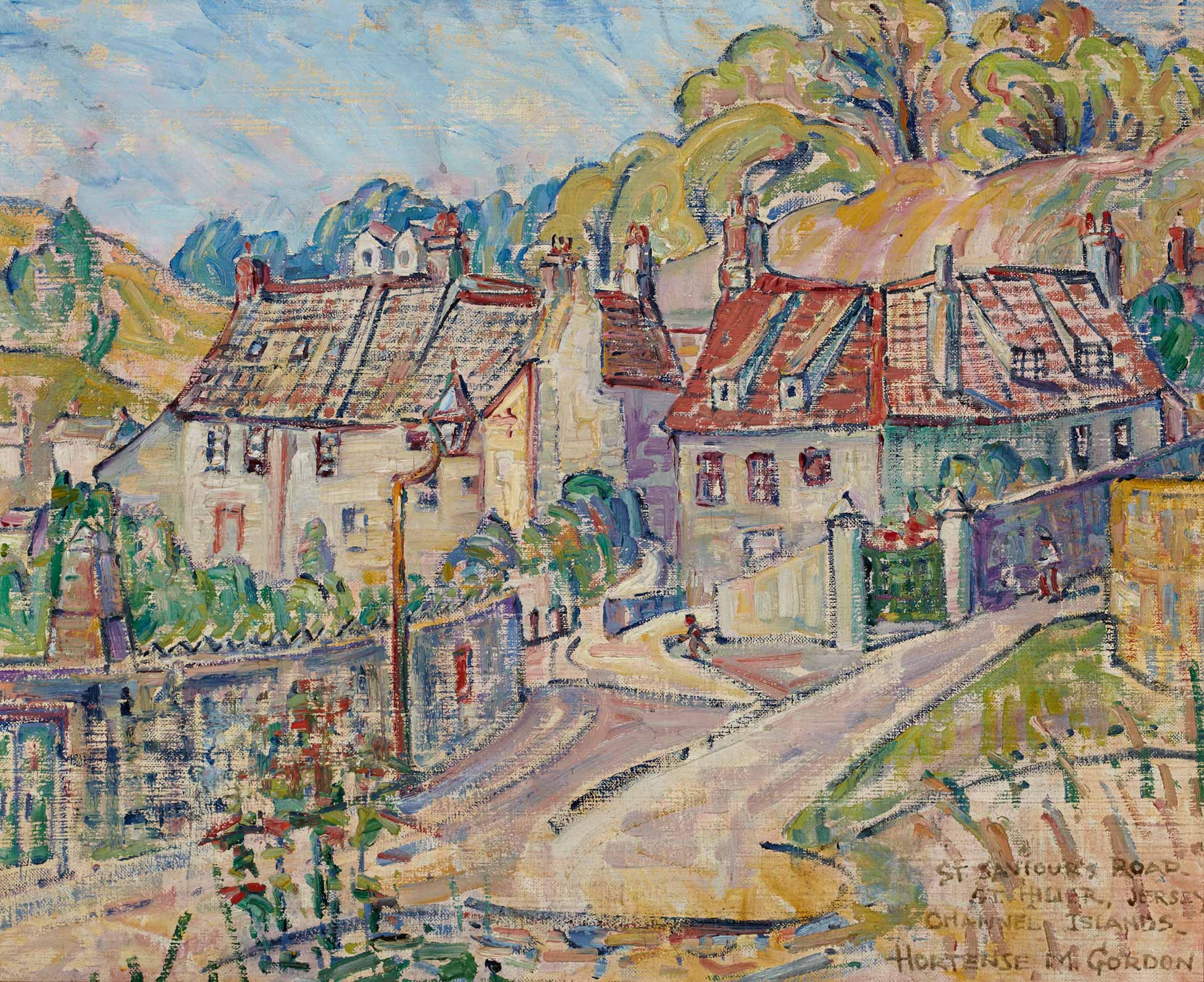Valley of the Bow River Above Revelstoke 1938

Doris McCarthy, Valley of the Bow River Above Revelstoke, 1938
Oil on canvas, 61 x 68.6 cm
Doris McCarthy Gallery, Scarborough
This is a fascinating image of the Rocky Mountains looking down on the Bow Valley and the river that flows through it. With its elevated viewpoint and high horizon, the cropping generates a claustrophobic effect, pushing the eye into the image rather than allowing it to pan across it. As with View from the Toronto General Hospital, 1931, it provides a textbook application of atmospheric perspective.
McCarthy made sketches of this scene during her first trip to Western Canada in July 1937. She travelled to Jasper, staying at Lake Edith, then headed to Maligne Lake and on to Prince Rupert, where she boarded a boat to follow the coast south to Vancouver. Finally, she camped in the Rockies at Mount Revelstoke.

McCarthy’s use of colour is intriguing because it is not realistic. Rather, it is rhythmic in the way the colours are selected, with browns and ochres in the foreground, bluish green in the middle ground on the left and a rusty red (a mix of raw and burnt sienna) on the right, fading to a light ochre in the background. The forms in turn are arranged to complement the colours. There is a platform at the base of the picture, then a brown rise on the right that slopes down to the left, at which point the eye can continue along the river to the background or move up the slope on the right to the peak, before dropping back down into the background. The eye zigzags smoothly as it moves from the foreground to the background.
McCarthy learned this back-and-forth technique from Hortense Gordon (1886–1961), her instructor at the Ontario Training College for Technical Teachers in Hamilton. As McCarthy notes in her autobiography: “[Gordon] taught that the basic principle of rhythm was orderly sequential change: of direction, as by allowing the trunks of trees in a grove to vary subtly in their slope from the vertical; of size…, of form…, of tone…, and so on with colour and texture. Any two elements in a design could be brought into harmony by creating a step half-way between them. To me, this was light shining into darkness.”
As McCarthy often observed, Gordon was almost singlehandedly responsible for teaching her composition, in which the principle of rhythm was a key component—something she felt she was never properly taught at the Ontario College of Art (now OCAD University).

 About the Author
About the Author
 More Online Art Books
More Online Art Books
 Acknowledgements
Acknowledgements